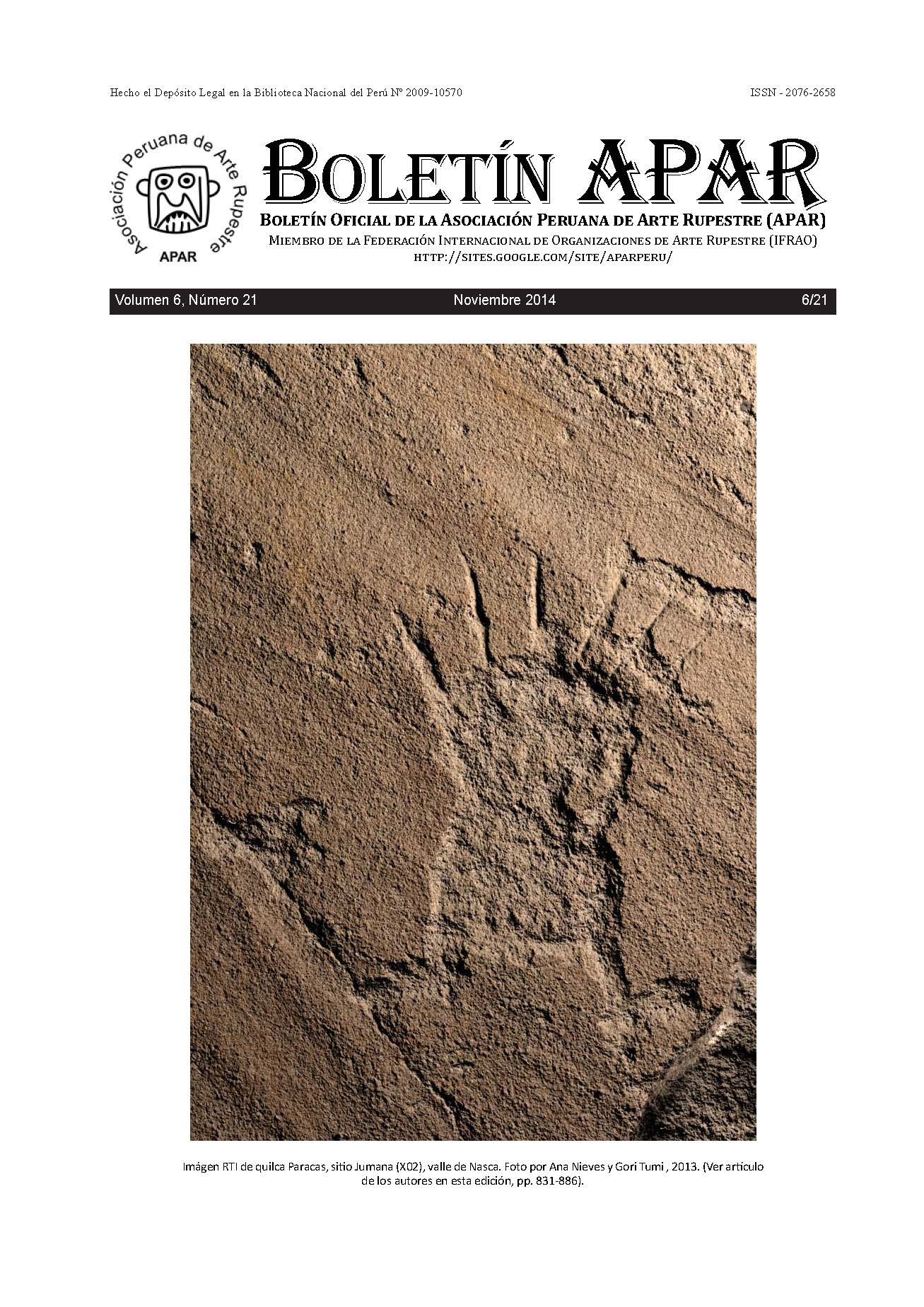Early Horizon and Early Intermediate Period rock art of the Nasca valley (department of Ica, Peru)
DOI:
https://doi.org/10.70748/ba.21.2014.354Resumen
Detailed observations are crucial for the scientific study of rock art, and Reflectance Transformation Imaging (RTI) provides much needed data in the technical analysis of this form of expression. Its use can contribute significantly to the study of rock art by allowing an analysis that goes beyond a definition of styles and iconographic motifs, making it possible to thoroughly examine the technical aspects of petroglyph manufacture as well as address relevant conservation issues at these fragile sites.
The petroglyphs of the Nasca valley were made on poorly cemented sandstone and they have sustained considerable damage due to the natural weathering of the rocks. This project sought to photograph the rock art at two Nasca valley sites (Fig. 1) and track the natural weathering processes that have damaged the petroglyphs.




